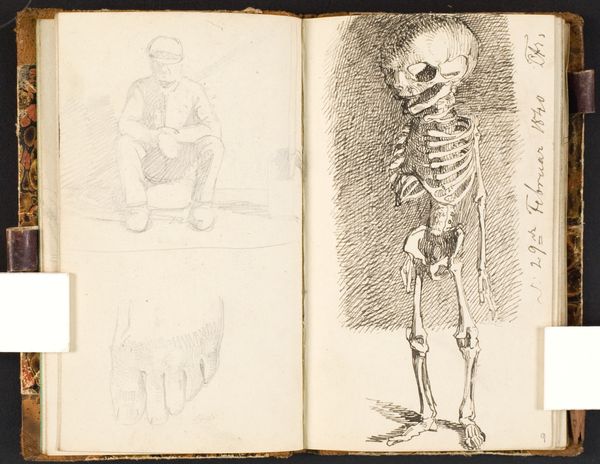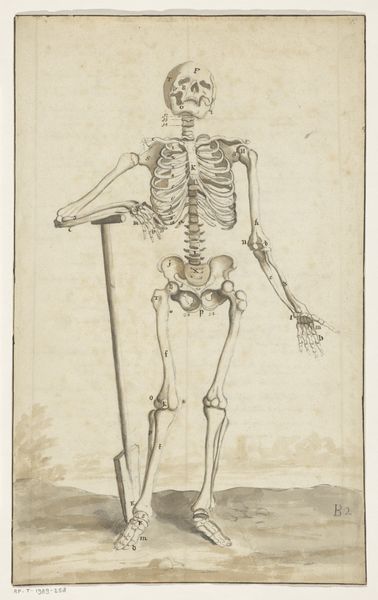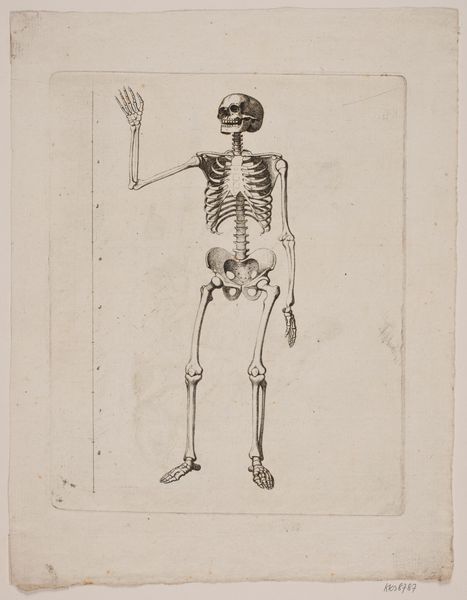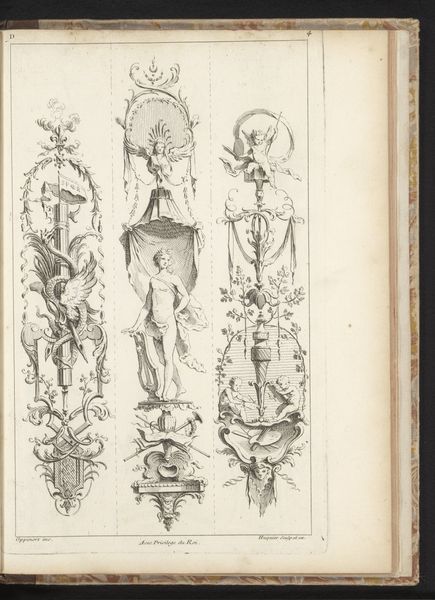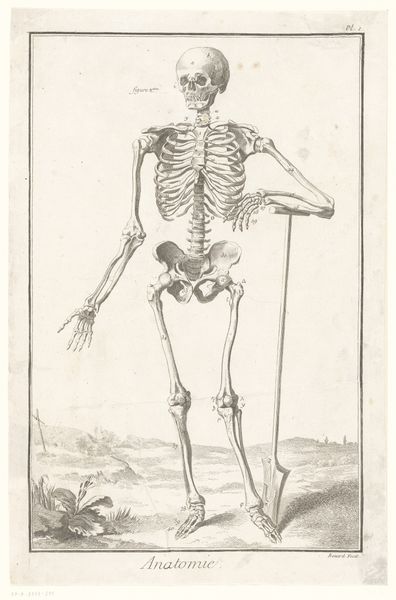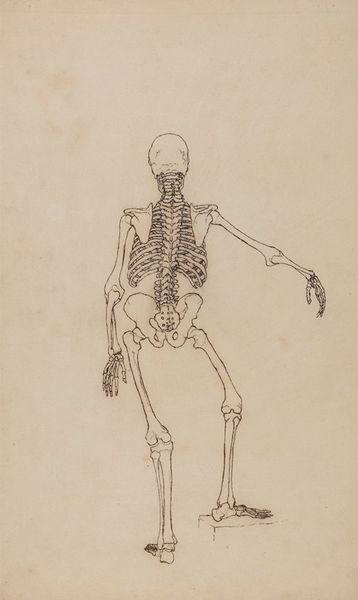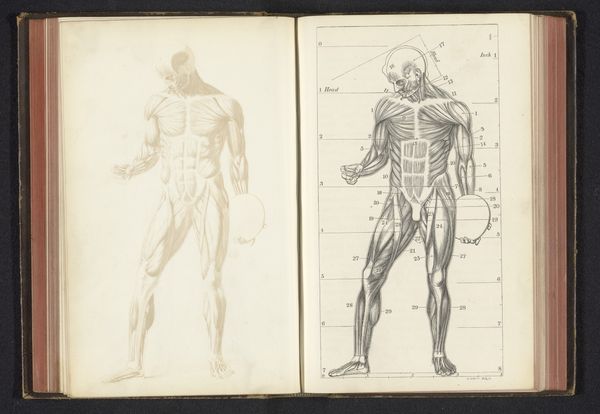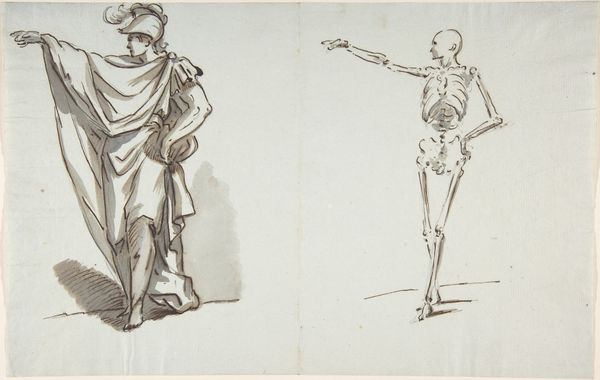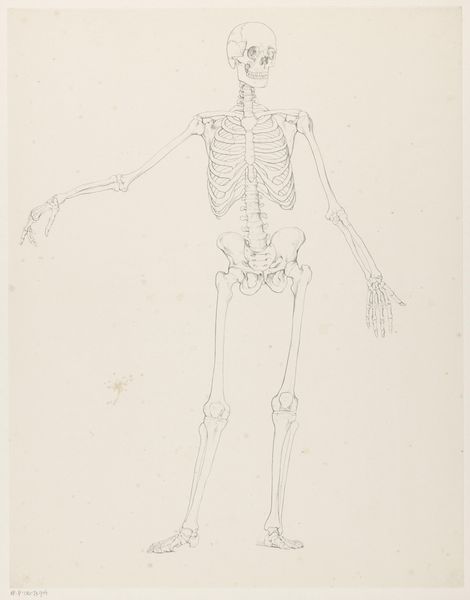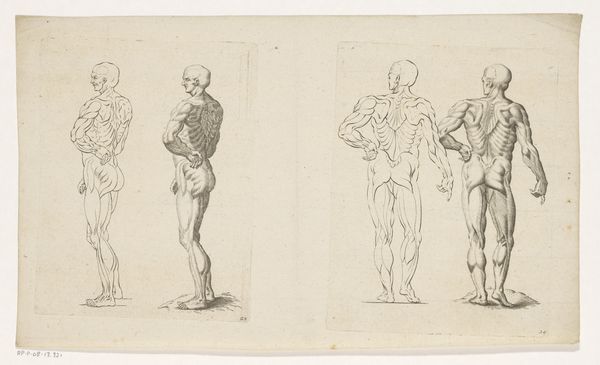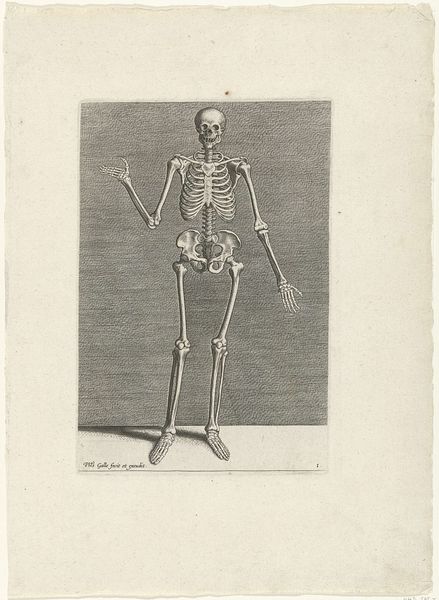
drawing, paper, ink
#
drawing
#
pen sketch
#
paper
#
ink
#
history-painting
#
academic-art
#
realism
Dimensions: height 213 mm, width 135 mm
Copyright: Rijks Museum: Open Domain
Curator: Take a moment with this open book displaying, "Fotoreproductie van een tekening, voorstellende een menselijk skelet," an anonymous ink drawing created sometime before 1868. What strikes you first? Editor: The stark contrast between the two skeletal figures on facing pages. One a light, almost ghostly outline; the other rendered with a dark, instructional precision. The geometry behind the bones on the right feels almost violent, compared to the softness of the skeleton on the left. Curator: The skeleton, so ubiquitous in art, has served diverse roles across history. During the time this drawing was created, rapid developments in anatomical sciences shaped a very materialist understanding of human existence, in contrast to much older spiritual beliefs around death. Its depiction reflects both academic and realistic influences, typical of the era’s efforts to scientifically categorize all phenomena. What ideological work could these kinds of drawings be performing? Editor: It’s hard not to see a visual translation of academic method at play, the rigid grid system used to accurately map each bone; each section labeled with a distinct number. This obsession with measurable order contrasts rather morbidly against what the image signifies – the end of measurable life itself. It strikes me as a kind of artistic oxymoron, a beautifully morbid illustration with a unique tension that resonates even today. Curator: I agree, especially as we see evolving conversations around bodies and accessibility. Consider how this rigid framing of skeletal forms relates to discussions around ableism, health, and even how different communities may experience institutional violence today, especially given debates around the "policing of life and death.” Even now, how does this image of a human figure, devoid of humanity, invite our awareness? Editor: Absolutely. And focusing back on the material—the choice of ink and paper lends the piece a permanence at odds with the subject of mortality it embodies, a tension between preservation and decay. It prompts questions of how we deal with ephemerality, from the personal body to historical narratives. Curator: So, in confronting a rather clinical rendering, we can actually reveal some pretty resonant links between mortality, measurement and ideology across time. Editor: Exactly. A very structured sketch becomes a potent prompt for broader questioning about life and death itself.
Comments
No comments
Be the first to comment and join the conversation on the ultimate creative platform.
